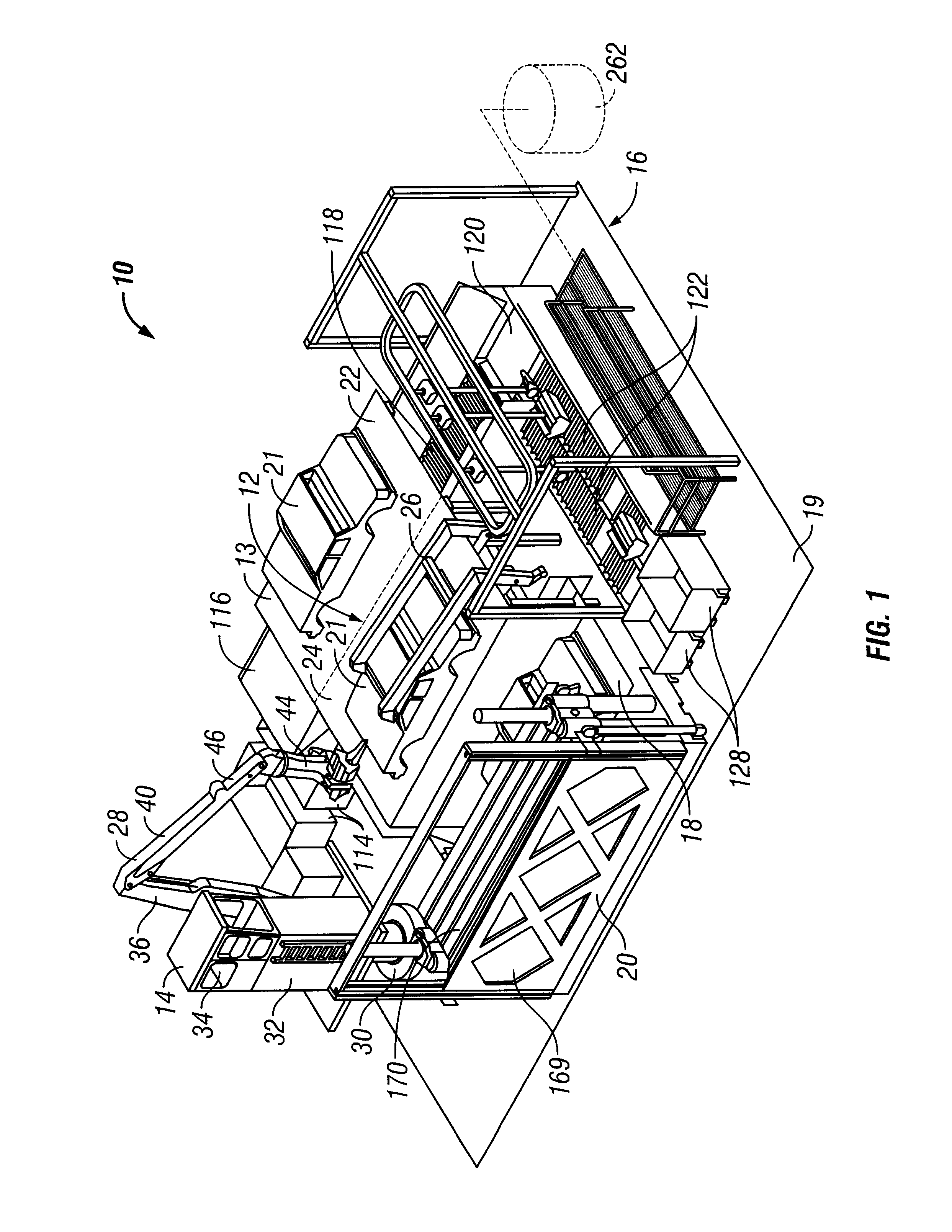Vehicle recycling system and method
a technology for recycling systems and vehicles, applied in metal-working apparatus, manufacturing tools, shaping tools, etc., can solve problems such as inoperable, difficult control of theft and vandalism, and land intensive traditional salvage operations, and achieve the effects of reducing efficiency, reducing labor intensity, and reducing the efficiency of outdoor scrap operations
- Summary
- Abstract
- Description
- Claims
- Application Information
AI Technical Summary
Benefits of technology
Problems solved by technology
Method used
Image
Examples
second embodiment
The second embodiment may also include a base assembly 230 to which the individual components are attached. The base assembly 230 serves to stabilize the individual components and fix their positions relative to one another.
A vehicle system in accordance with the present invention offers several advantages over prior systems. First is the environmental benefit that comes from the recycling operation being moved indoors. Since the system is set on a concrete slab and inside, there are no ground water or rainwater run off issues. Hence this system is in strict compliance with edicts from the National Pollution Discharge Elimination System. Residual fluid is more easily removed and managed. In this respect, system can include a floor drain 260 which is connected to a collection tank 262 so that the waste fluids can be recycled and / or disposed of in accordance with applicable environmental standards (See FIG. 1). The tank can be buried under ground at a location outside of the building ...
PUM
 Login to View More
Login to View More Abstract
Description
Claims
Application Information
 Login to View More
Login to View More - R&D
- Intellectual Property
- Life Sciences
- Materials
- Tech Scout
- Unparalleled Data Quality
- Higher Quality Content
- 60% Fewer Hallucinations
Browse by: Latest US Patents, China's latest patents, Technical Efficacy Thesaurus, Application Domain, Technology Topic, Popular Technical Reports.
© 2025 PatSnap. All rights reserved.Legal|Privacy policy|Modern Slavery Act Transparency Statement|Sitemap|About US| Contact US: help@patsnap.com



